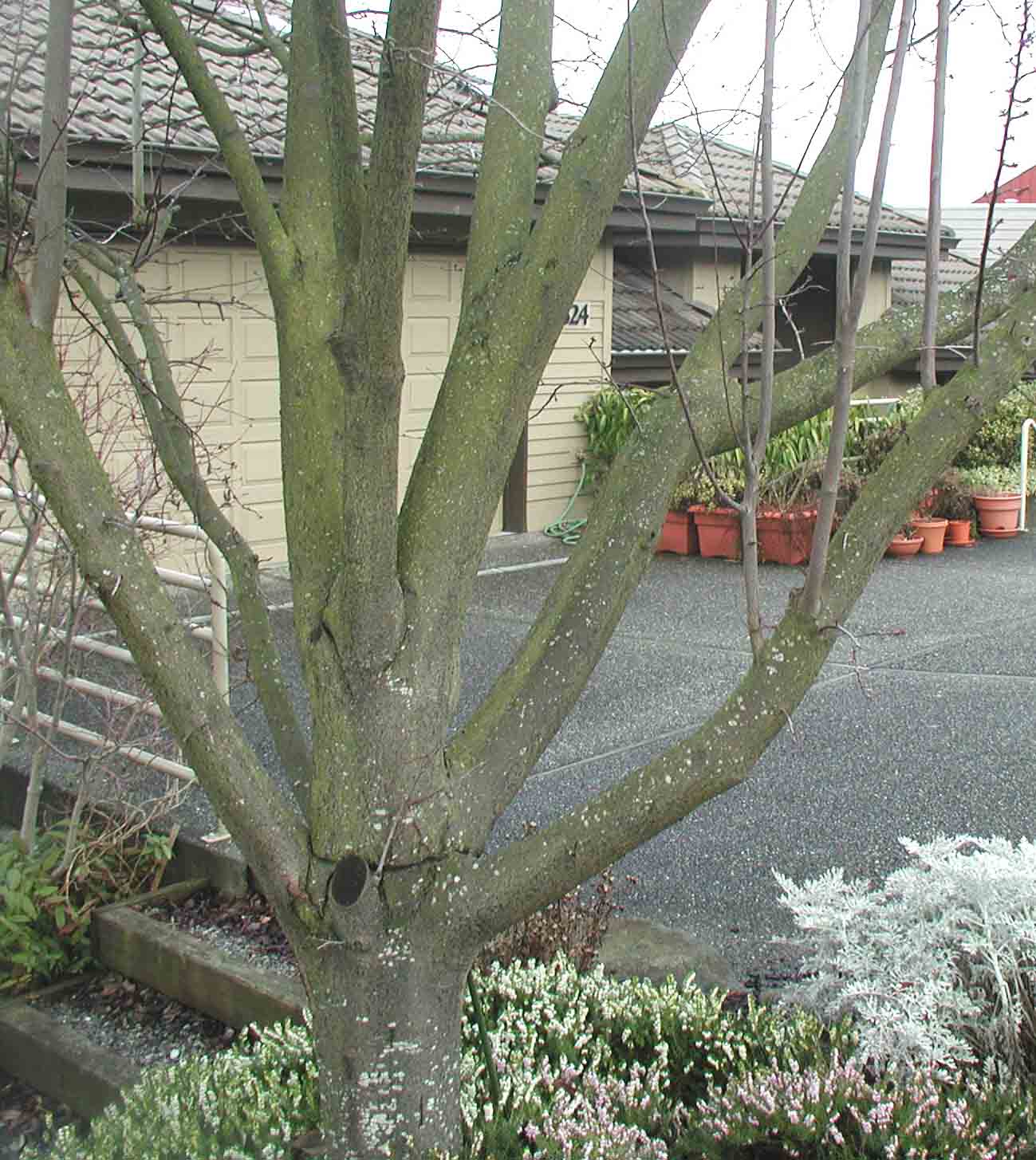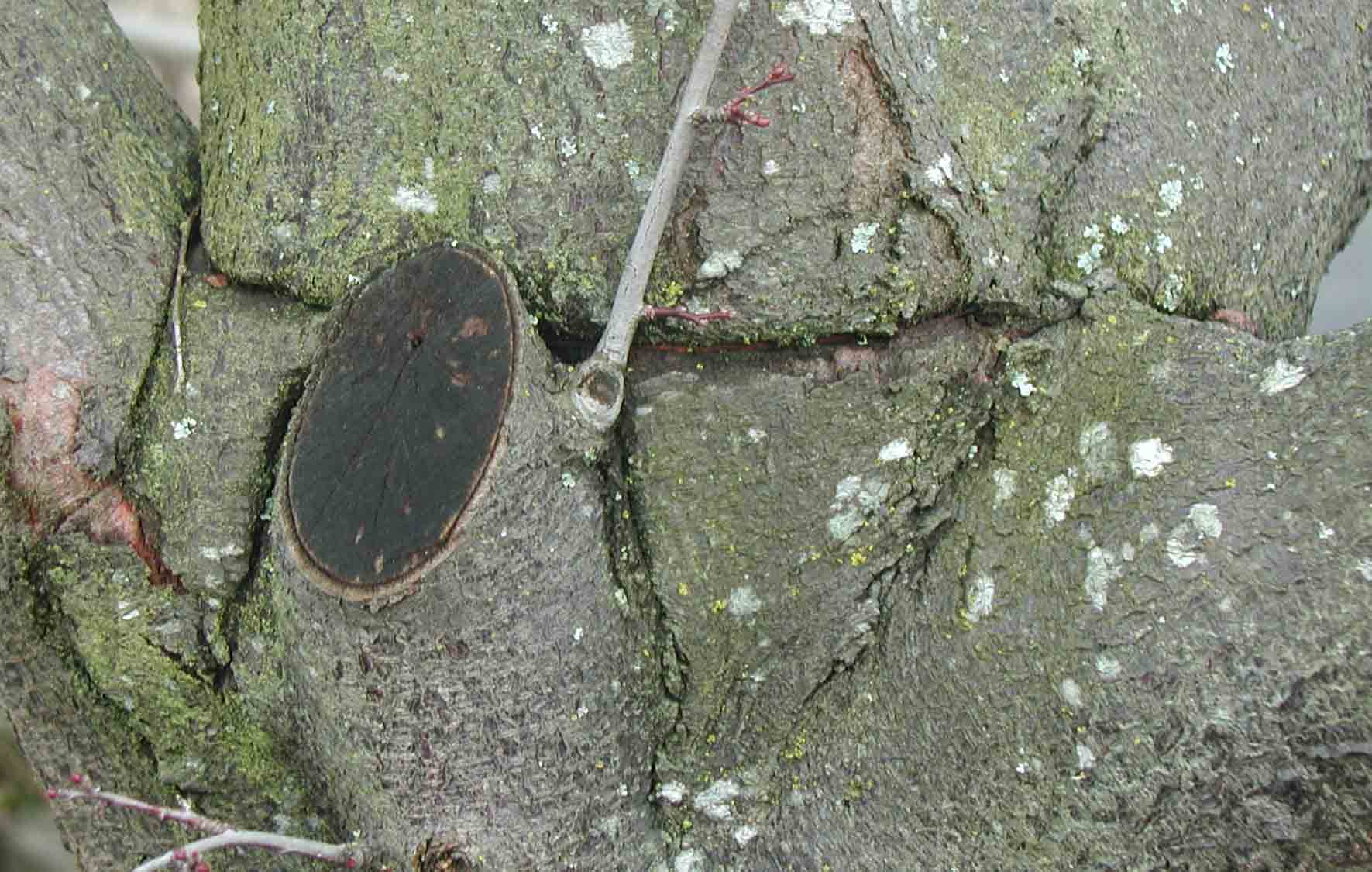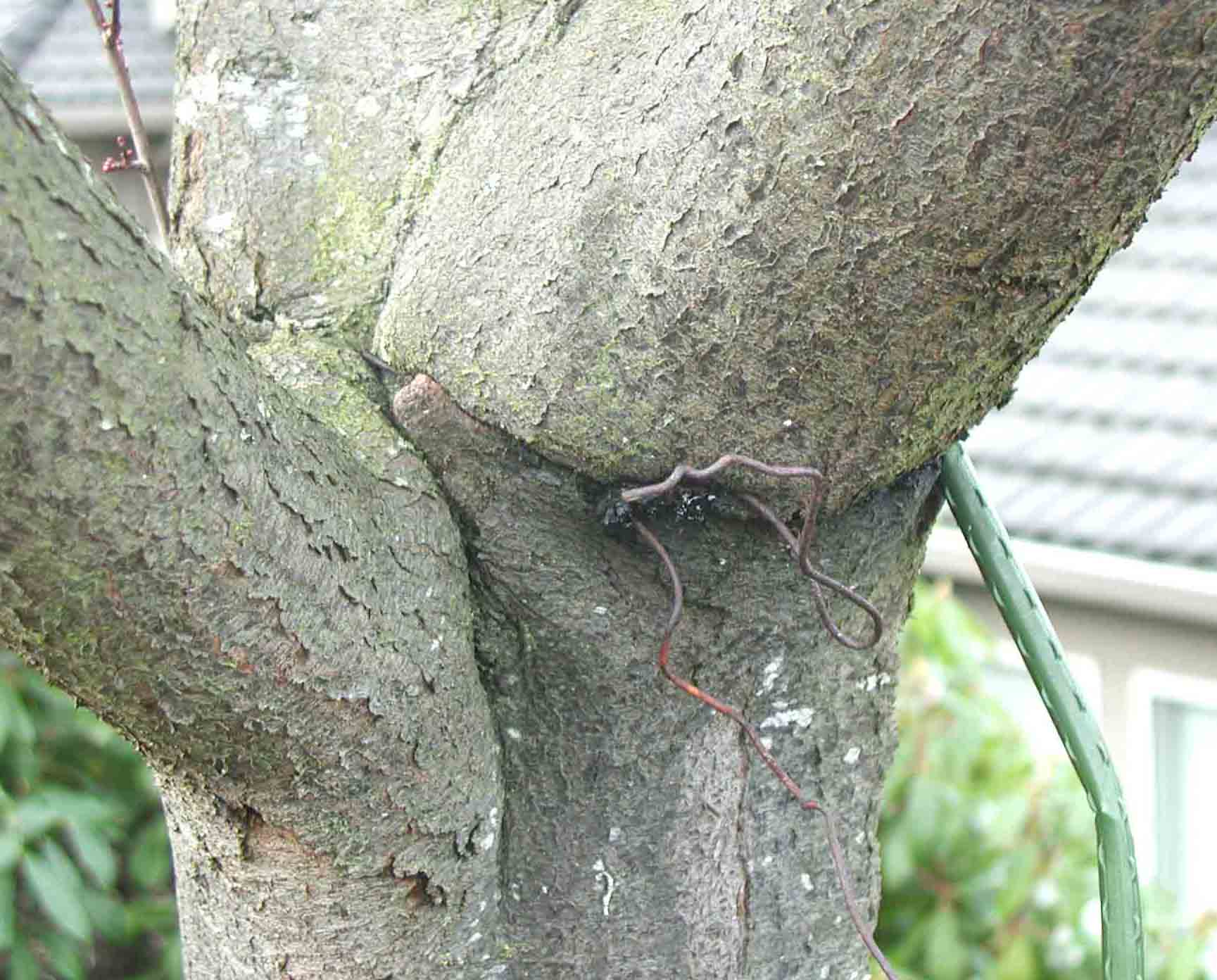Good morning (at least it is in my time zone)! And welcome to those of you who found us through Blotanical or another blog site. We love seeing the increased participation on our blog.
Since I am a teacher at heart, I was glad to see so much thoughtful discussion over the weekend. Many of you suggested that pruning for vehicular traffic was the trigger for this growth, and it’s true that removing large limbs or heading back branches will result in vigorous epicormic growth. But I cheated on the photo and cropped it above the point of interest. Here’s the entire photo of this tree:

You can doubtlessly see that dark line encircling the trunk just above the two branches with the shoots. Here it is close up:

Venturing around to the back of the tree, we can see the source of this line – neglected staking wire that has now been enveloped by the trunk.

What this wire has done is to girdle the phloem elements, which as you’ll remember from basic plant science, are directly below the bark and the cork cambium. Without functional phloem, nutrients from the crown can’t reach the roots. Since the two lower branches were spared this girdling, they can still transport sugar to the roots, so the tree hasn’t died. But now it’s directing resources (water and nutrients) into the lower branches, where the new epicormic shoots are forming a new, functional (albeit ugly) crown. In time, the original crown will probably fail; there’s already evidence that the trunk is dying:

What could be done with this tree? If the wire were removed or at least cut so that the trunk could pop it apart, there is the possibility that the crown could have been saved. But since the upper trunk already looks severely compromised, it’s probably too late.
As a sad update to this set of photos, the owners had a tree “service” (I use the term loosely) to remove all the epicormic shoots from the lower limbs! I will let you know when and if the whole thing fails.
Oh, and gold stars to all who participated in the quiz!
Great example!
Oh, boy, what a good quiz! Poor tree.
I knew there was more to the picture! That's cheating, Linda!
You could attempt to save the tree with a bridge graft. There's nothing to lose – the tree will eventually decline anyway. I'd give it a go – I do love a bit of surgery!